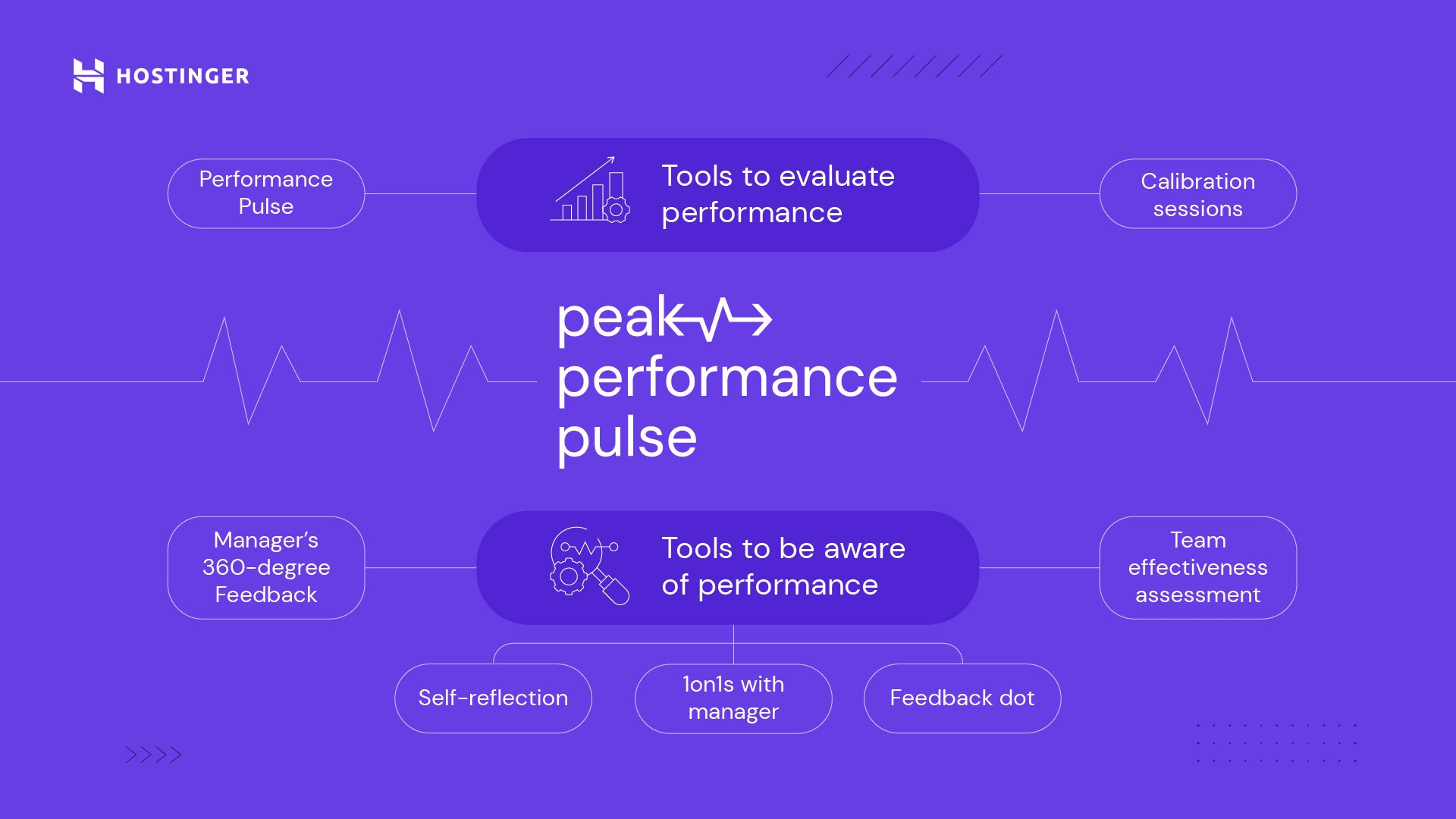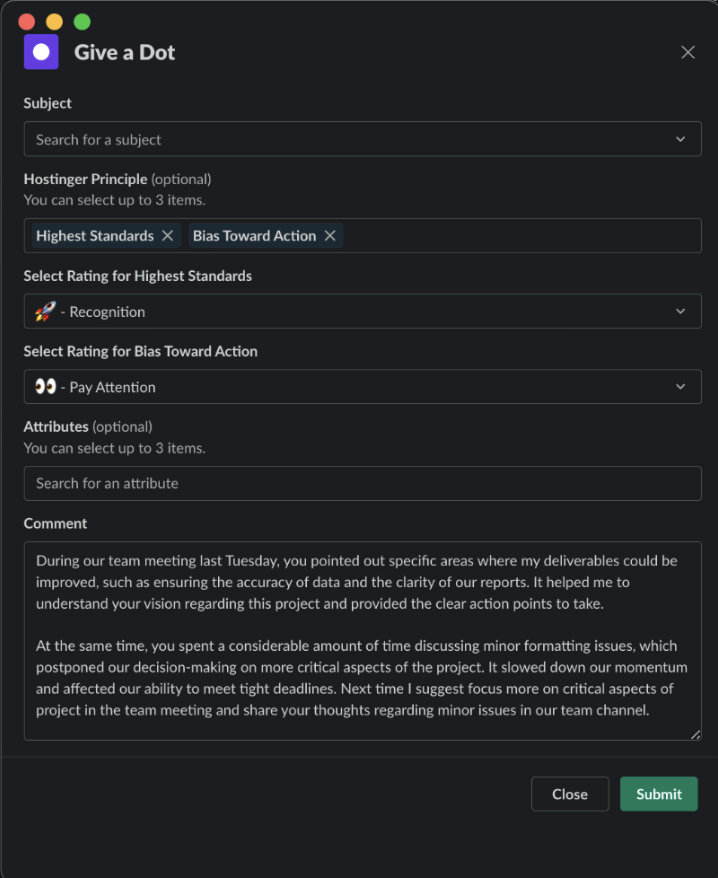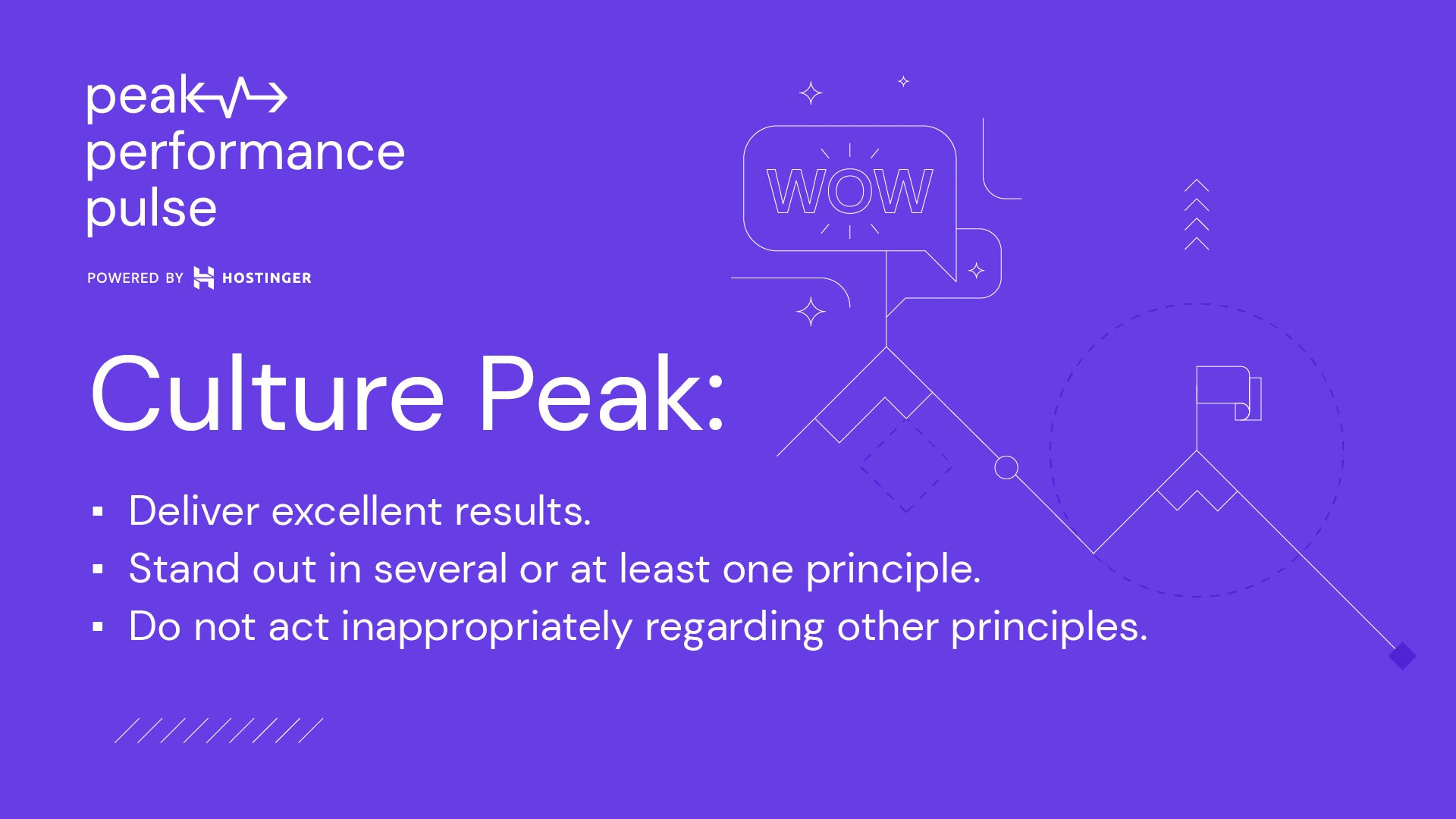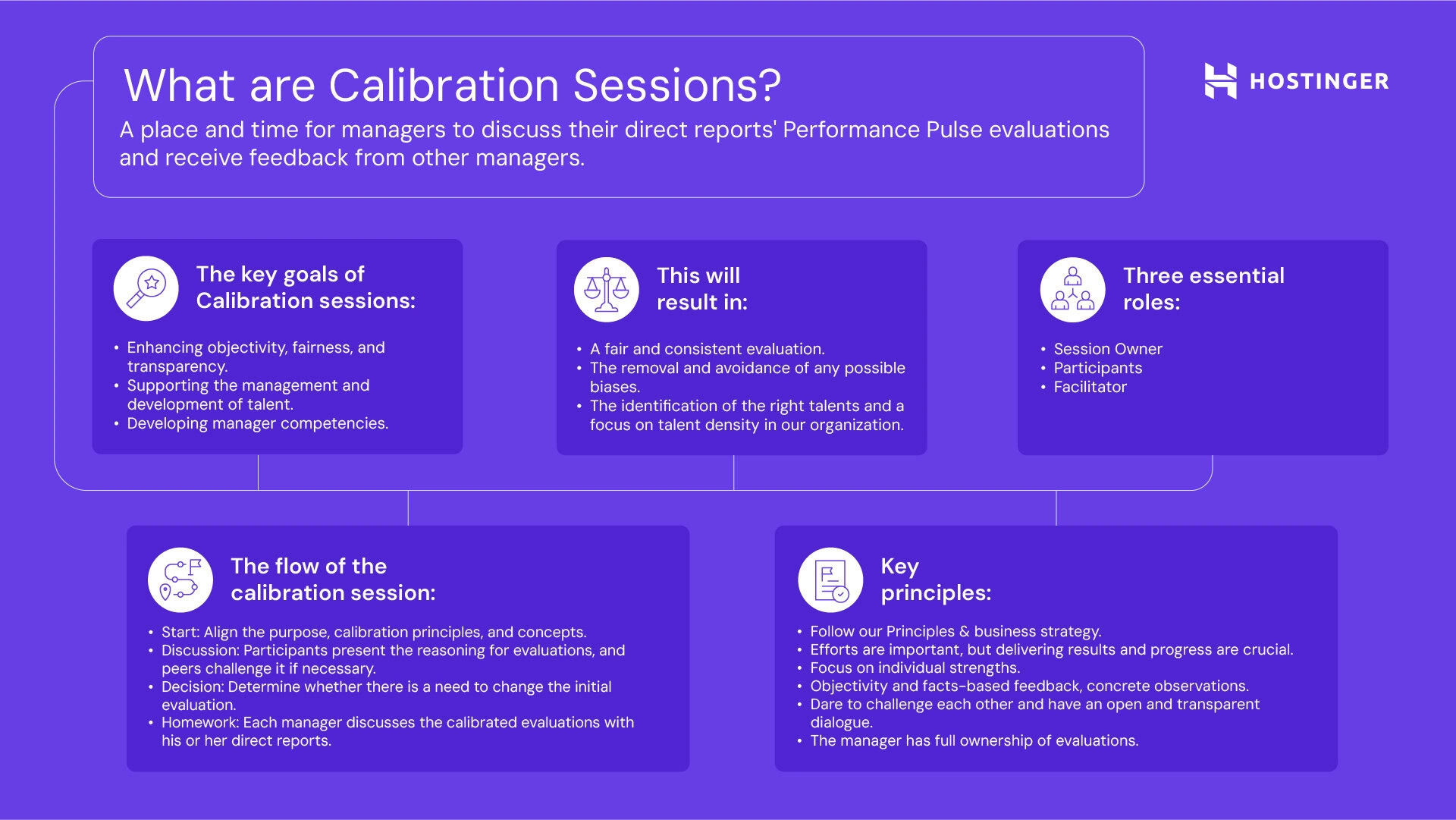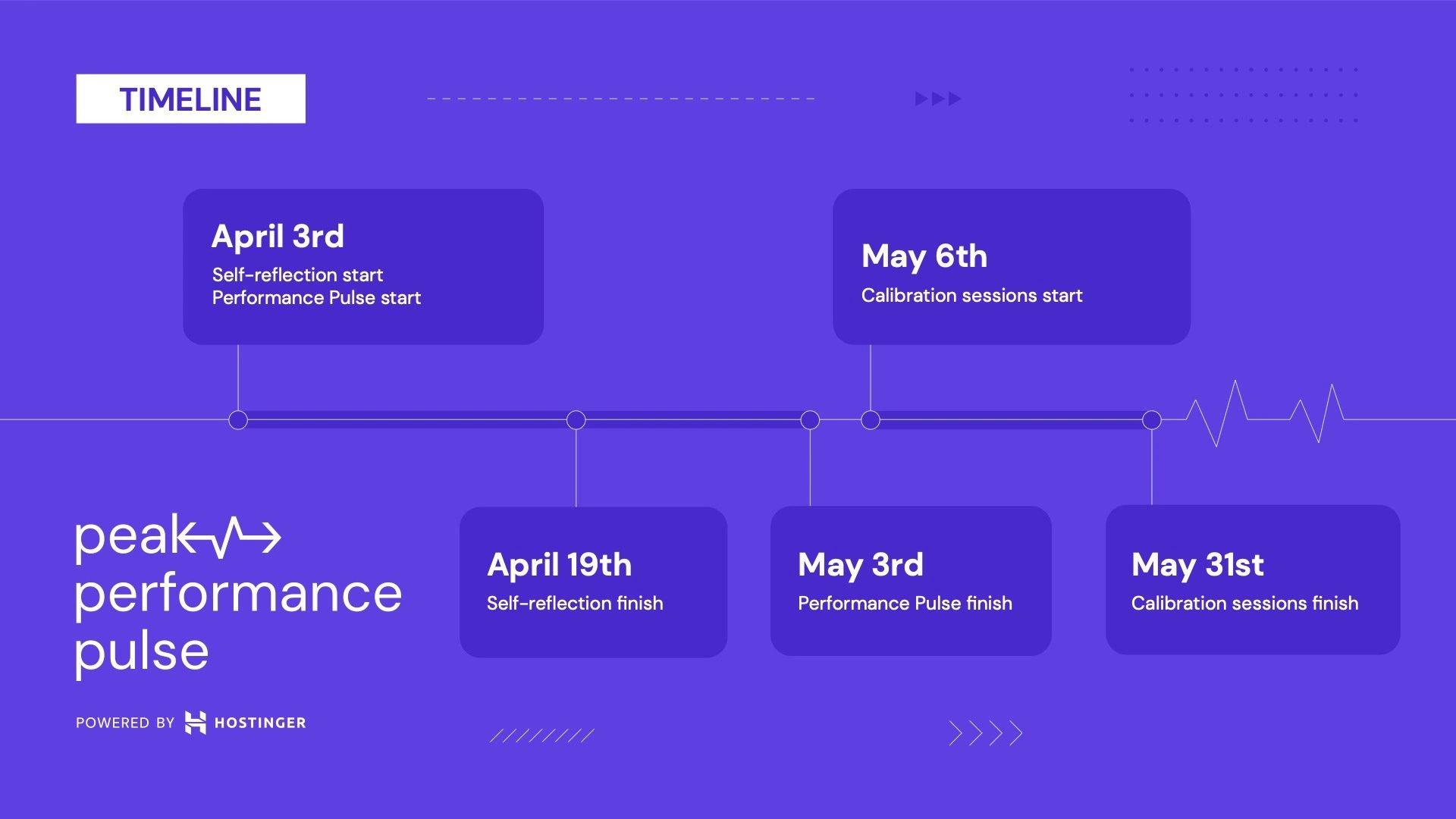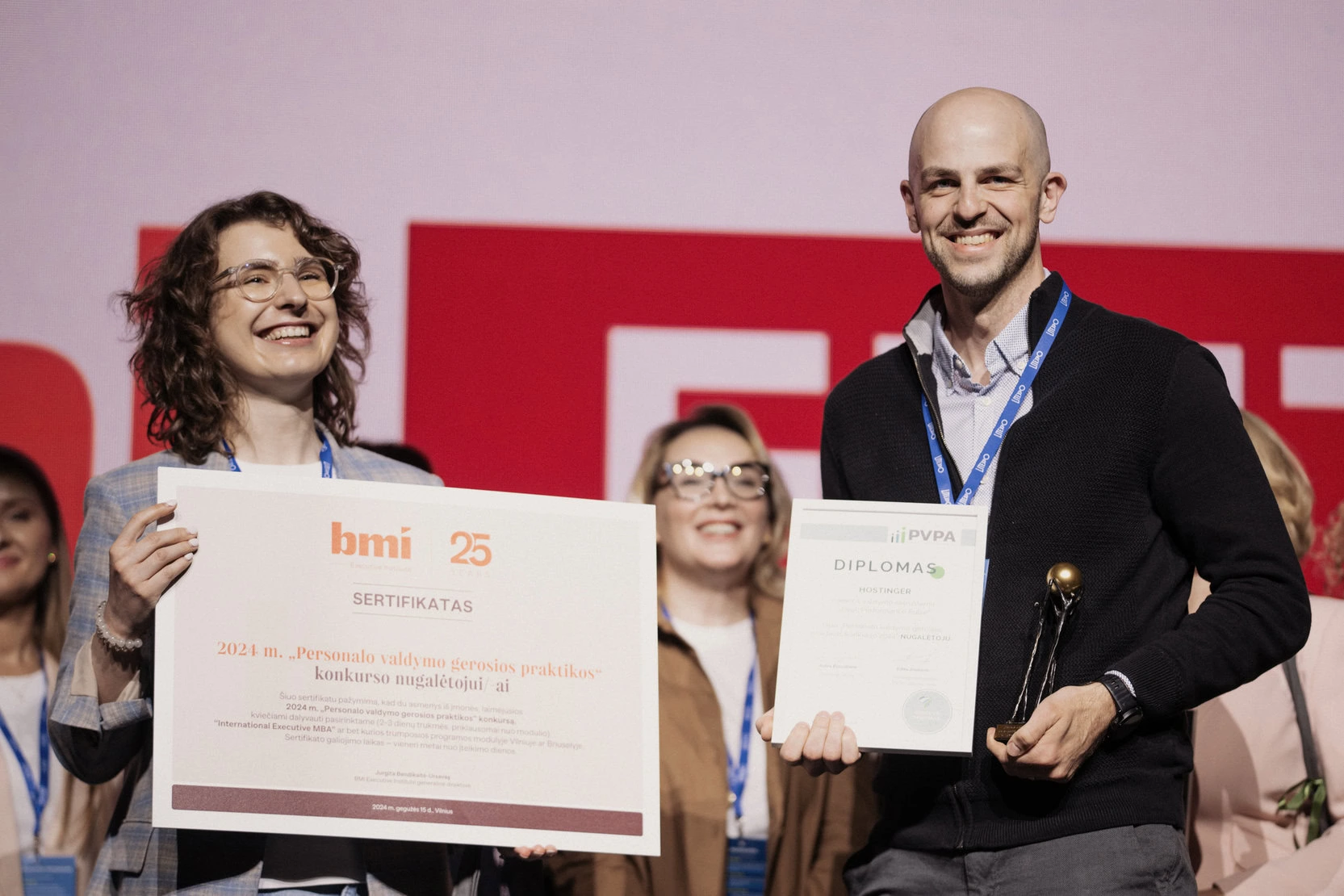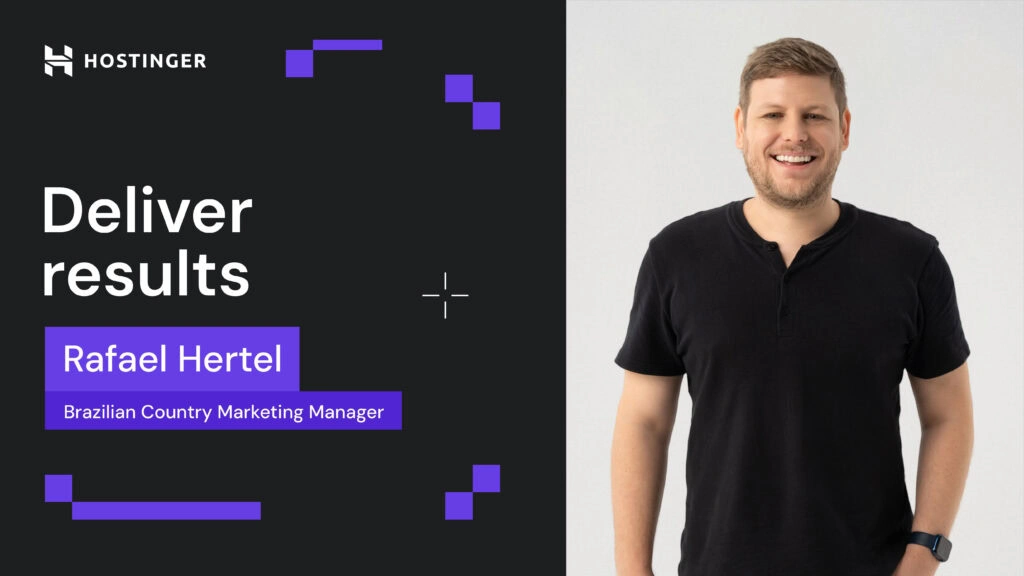Reaching your peak: Lessons of building our performance management system for the self-motivated
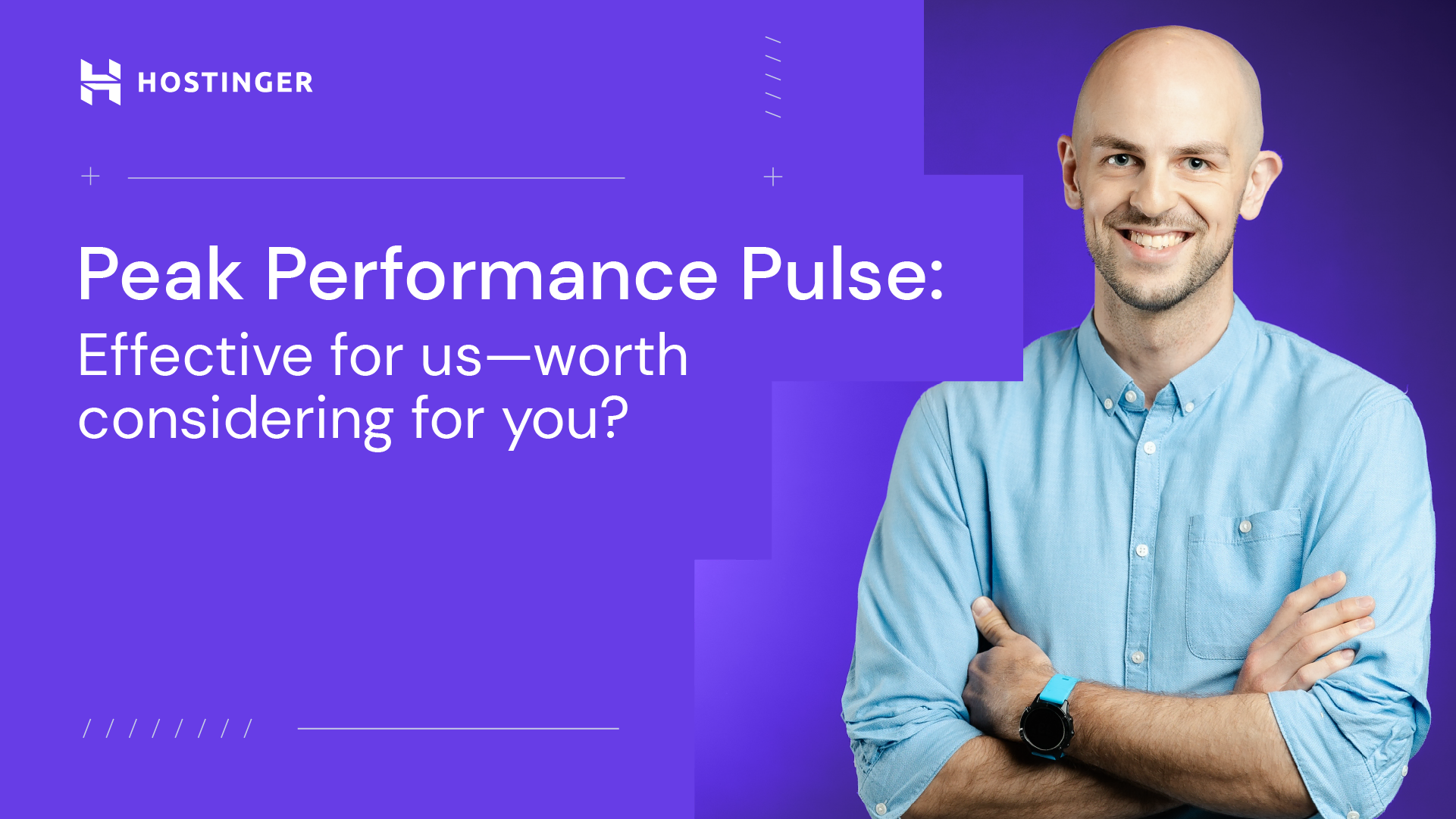
Hostinger has been recognized as one of Europe’s fastest-growing companies for five years in a row. In 2023, our revenue grew by 57% despite a 17% decrease in headcount. One of the leading factors behind this remarkable result is our efforts to nurture a high-performance culture.
Over the years, we tried various tools to support our HR strategy. As we didn’t find a perfect fit for our needs, we have created our own solution – the Peak Performance Pulse (PPP) ecosystem.
In this blog post, we’ll share our approach to building, improving, and implementing this system that fuels our growth.
Creating the best workplace
There are many studies about transformational leadership and job performance, the role of occupational self-efficacy on work performance, and the development of a sense of competence.
In addition to them, we believe that true progress comes from self-motivation and a culture of self-growth. Employees need to have the freedom and responsibility to make progress and achieve better results without anyone forcing them to.
Even though our principles have already supported this approach, we did not have the tools to integrate it into our operations.
That’s why Justas Kupčinskas, Lead People Development, started building a system that empowers each employee to be accountable for their performance. That’s how the Peak Performance Pulse (PPP) ecosystem was born.
“With PPP, we are making sure that all the employees get the best of our culture and that Hostinger is the best place to work for the self-aware, self-disciplined, self-improving, and ambitious.
The PPP system is all about enabling people to grow with the support and constant feedback from managers and peers. It’s about mobilizing learning and growth. Sure, everyone has their ups and downs, and their performance varies. That’s why it’s important to track it, to feel its pulse so that we make sure we stay on the upward trajectory, amplify and recognize the peaks, and diminish the downs,” – explains Justas Kupčinskas.
It took four months to develop this in-house system. During that time, the People team spoke with our employees, consulted with experts from organizations like Google, Netflix, and Amazon, and studied a wealth of academic literature and articles on other companies’ practices.
However, developing PPP is a continuous process – the team constantly collects feedback and implements it to ensure the system’s efficiency.
“We know that the high talent density determines the success of our company. It would be a shame not to try to reach its full potential. We want to enable employees to receive feedback on their performance regularly and have an open relationship with their manager, ensuring continuous growth and learning,” – explains Justas Kupčinskas.
Making feedback inevitable
Daugirdas Jankus, CEO at Hostinger, who was also heavily involved in developing the system, says that PPP is a great system for consistently generating quality feedback.
“Feedback is very important for understanding ourselves better and knowing where we are going. On the other hand, it’s honestly quite difficult to have dedicated time for feedback sessions because we’re always busy with our day-to-day tasks.
The Peak Performance Pulse ecosystem makes us block some time to reflect on ourselves and the people around us, making giving feedback inevitable. I think it will help each of us to grow personally and professionally. As a result, our company will achieve greater success,” – believes Daugirdas Jankus.
Learn more by listening to the podcast with Sofija Čelutkienė, Chief People Officer at Hostinger, and Daugirdas Jankus, discussing Peak Performance Pulse.
How we implement Peak Performance Pulse
In the Peak Performance Pulse ecosystem, insights and feedback people receive about their performance are primarily dedicated to learning and development, not evaluation.
As PPP is a tool for growth, people can be more open and transparent. This helps to reduce biases and provide a clear understanding of how everyone is actually doing.
Peak Performance Pulse is a set of seven main tools that help talented individuals perform at their very best:
- Self-reflection
- One-on-one meetings
- Feedback Dot
- Manager’s 360-degree feedback
- Team effectiveness
- Performance Pulse
- Calibration sessions
To give you a better idea, let’s go over the main PPP tools for evaluating an employee’s performance:
Self-reflection
Performance awareness starts with looking back at yourself, and the self-reflection tool is designed exactly for that.
At the beginning of each quarter, our employees conduct a comprehensive self-review of their performance in the previous quarter. This gives everyone a great opportunity to reflect on their behavior, evaluate past results, and find ways to improve.
Pain + Reflection = Progress
Ray Dalio
From the managers’ perspective, the knowledge gained from self-reflection gives more transparency regarding their direct reports’ performance, making it easier to identify knowledge gaps or unclear expectations. It also provides meaningful material for discussion, focusing not only on achievements but also on setbacks, mistakes, and failures.
For self-reflection, we use an HR management system called HiBob. Every employee has to access their HiBob account and answer a list of self-reflection questions, which help reflect their impact on team results and contributions to OKR planning, customer success, and more. Moreover, these questions are designed to communicate expectations from the company.
Self-reflection questions we use at Hostinger:
- How did I contribute to the recent team and company-level OKR planning?
- How did I personally contribute to team OKR results last quarter?
- What other impactful work did I do besides OKRs?
- What challenges did I face over the last quarter?
- What did I personally do to improve Hostinger customers’ experience? Give at least a couple of examples.
- What development feedback did I receive last quarter? Give at least a couple of examples that were meaningful for you.
- What feedback did I give to my manager and colleagues? Give at least a couple of examples.
- What two Hostinger principles were my strengths last quarter?
- What are the two Hostinger principles that I can improve?
Almost immediately after its launch in January 2024, the self-reflection tool helped us identify areas that lacked clear communication. For example, some people were unsure how they could improve customer experience without communicating directly with clients.
This was a great opportunity for managers to remind their direct reports that everyone can and should contribute to our clients’ success, regardless of their position in the company. They can, for example, participate in Customer interviews, Meet the Client events, and Customer Success team shadowing sessions or test Hostinger services and provide feedback for refinement.
One-on-ones with the manager
One-on-one meetings provide a platform for meaningful conversations between direct reports and managers. These sessions empower every employee to take an active role in their development while also allowing managers to recognize high performance and give constructive feedback.
We hold one-on-one meetings every one to two weeks for 60-90 minutes, and the agenda usually covers personal care, work-related check-ins, and individual goals.
Meetings begin with the employee’s self-reflection on their performance, ensuring the manager hears their perspective first. Then, the manager gives specific and concrete feedback, focusing on key behaviors and their impact.
To maximize effectiveness, managers minimize distractions and prioritize active listening. Each session concludes with clear, actionable plans and follow-up dates to ensure continuous improvement and accountability.
Our recent survey shows that 82% of employees received meaningful feedback that helped them grow during one-on-one meetings, and 74% agreed on specific steps on how to maintain or improve high performance.
Feedback Dot
Feedback flow should not be restricted only to manager-report relations – all employees should be able to share feedback with each other, too. For that, we launched the Feedback Dot app at the beginning of 2022. We took inspiration from The Dot Collector, one of the tools Bridgewater Associates uses to facilitate its culture of radical transparency.
The custom tool is designed to promote transparency, communication, and collaboration within the organization while also affirming our principles. We encourage employees to give unsolicited feedback to anyone, even C-level executives. If there’s a specific area they want to improve, people can also request feedback from their peers or managers.
To streamline the feedback flow, we integrated the Feeback Dot tool directly into Slack. This provides a user-friendly and simple solution for giving and collecting performance feedback.
Employees also receive automated reminders to send a dot once every two weeks, ensuring a consistent feedback-giving practice. In the long run, this approach is very effective in normalizing feedback, encouraging people to provide it constantly and often, and promoting a learning culture.
Moreover, every feedback dot is publicly visible within the company, giving anyone a chance to learn from other people’s shortcomings and accomplishments.
In 2023, we requested 6,001 dots and gave 17,613 dots: 25% developmental and 75% dedicated to praising our colleagues.
Manager’s 360-degree feedback tool
Manager’s 360-degree Feedback Tool allows employees with managerial roles to receive performance feedback from multiple perspectives, including their team leaders, peers, direct reports, and other stakeholders.
The primary purpose of this assessment is to get a detailed holistic view of managers’ competencies based on Google project Oxygen and Hostinger’s Principles. With this feedback, we can more easily identify areas where managers excel and areas to improve.
Inspired by Google Project Oxygen, we define a good manager as a leader who:
- Is a good coach;
- Empowers their team without micromanaging;
- Creates an inclusive team environment, showing concern for success and well-being;
- Is productive and results-oriented;
- Is a good communicator;
- Supports career development and discusses performance regularly;
- Has a clear vision and strategy for the team;
- Has key technical skills to help advise the team;
- Collaborates effectively across Hostinger;
- Is a strong decision-maker.
Every quarter, a selected number of managers take part in the Manager’s 360-Degree Feedback initiative. Here, each participant will have to send assessment surveys via HiBob to their direct reports, team leaders, and peers.
The survey uses a five-point Likert scale to measure participants’ opinions toward the manager’s behaviors and performance. There are also several open-ended questions, enabling participants to elaborate on their answers.
Following the assessment, each manager will discuss the overall results with their team leader, and People partner to maximize their strengths even more and find ways to improve.
If further development is deemed necessary, managers can take part in our internal Managers Academy, have external coaching sessions, participate in a case study analysis, and have opportunities to attend worldwide training and conferences.
Team Effectiveness Tool
The Team Effectiveness Assessment Tool aims to assess a team’s performance based on team characteristics outlined in Google Project Aristotle, the five dysfunctions of the team, and the Hackman team effectiveness model.
First, we collect feedback from team members on various aspects of team effectiveness, such as psychological safety, accountability, structure, and manager support. This comprehensive questionnaire provides insights into which areas team members excel at and should continue doing, as well as what issues prevent the team from reaching its peak performance.
After compiling these insights, we organize the Team Effectiveness Workshop, where the team identifies problems, finds solutions, and brainstorms actionable steps and initiatives to address each pain point effectively.
Simply put, the Team Effectiveness Tool provides a detailed, actionable, and holistic assessment of team performance. It facilitates effective problem-solving, promotes a culture of psychological safety and continuous improvement, and aligns team approaches with the best company practices.
Evaluating performance
While PPP mostly deals with increasing self-awareness and giving and receiving feedback, the performance evaluation component is no less important.
Such a component is crucial to recognizing employees who embody our culture at the highest standard – culture peak performers, as we call them – and sharing these excellent examples with the rest of the company. We also need to identify employees whose performance needs improvement.
Performance Pulse
The Performance Pulse evaluation systematically assesses, measures, and analyzes an individual’s performance against the company’s expectations. It helps managers assess an employee’s career development, compensation, and promotion possibilities.
The recipe is simple – the manager just has to answer a few questions.
- Given what you know of this person’s performance and achievements in the last quarter, you consider this employee as:
- Culture peak – delivers results and demonstrates outstanding behavior regarding one or several Hostinger principles.
- Reliable performer – meets or slightly exceeds high-performance expectations.
- Low performer – struggles to deliver results or work by Hostinger principles.
- If this person told me they were leaving for a similar job at a competitor, would I fight hard to keep them?
The second question is also known as the Keeper test. It is a Netflix-inspired test that provides powerful insights regarding managers’ evaluation of their direct reports. At Hostinger, we use the Keeper test to ensure that every manager understands and values the impact of their direct reports and communicates it regularly to them.
More importantly, the Keeper test aligns perfectly with our Hire & Develop the Best principle. The manager is responsible for keeping only highly effective people, developing them, and helping to scale within the organization.
If someone fails the Keeper test, it does not necessarily mean that they should be laid off. Instead, it indicates that a constructive conversation between the manager and the direct report must happen as soon as possible.
The manager is also encouraged to conduct a Reverse Keeper test by asking their direct reports during one-on-ones: “How hard would you fight to keep me as your manager?”
This discussion provides a great opportunity for managers to receive candid feedback about their management style and whether team members see them as effective leaders. Additionally, to promote transparency and foster managers to have these meaningful conversations, the Performance Pulse evaluations become visible to each employee by the end of each quarter.
Calibration sessions
Calibration sessions help ensure that every decision managers make is based on data, not personal preferences.
During these sessions, several managers from the same team or department discuss their direct reports’ performance evaluation data to align expectations. Each manager briefly explains the reasons behind their evaluations and remains open to feedback from other managers.
This additional perspective helps managers better understand their direct reports’ performance and behavior impact, leading to fairer and more objective evaluations. Sometimes, team leaders even decide to change their initial assessments based on other managers’ input.
To illustrate, after the recent Calibration sessions, 25% of evaluations were adjusted, and the average score regarding the meaningfulness of the sessions was 4.75 out of 5. From these numbers, we can see just how effective alignment meetings are when it comes to improving fairness and objectivity in evaluations.
For more information about Calibration sessions, listen to the podcast with Sofija and Kristina Strimaitė, our Chief Marketing Officer.
Results and impact
Launched at the start of 2024, Peak Performance Pulse has already proved useful. In each iteration, we reached 99% employee engagement in writing self-reflections, with 77% of participants expressing their satisfaction with the initiative.
A company-wide survey also revealed that 83% of managers were able to have meaningful conversations with their team members after reading the self-reflection assessments, and 73% said that PPP helped them make better management decisions.
When asked how PPP has impacted their development:
- 98% of Hostinger employees say that they now have a better understanding of what is expected of them at work.
- 92% feel that they have more opportunities to learn and grow.
- 87% believe that their achievements and results are more visible and recognized.
- 95% say they receive more meaningful feedback from their manager.
These results show that most of our employees see the value and meaning of the Peak Performance Pulse tools in their work.
Additionally, we use the PPP system to shape our People team strategy. For example, based on the recent self-reflection data, we identified several learning areas that our organization needs to improve:
- Time management and prioritization – managing OKR and non-OKR projects or tasks, coping with urgency, and managing time and resources effectively.
- Effective communication – active listening, following up, verbal and written communication.
- Stress management – handling stress at work and taking care of personal well-being.
- Adaptive execution – being resilient to challenges, managing setbacks, and achieving expected results.
- Learning agility – learning quickly and using knowledge instantly.
- Cross-team collaboration – cooperating across multiple teams and departments, as well as managing expectations and communication.
This provides direction for our L&D team regarding training and high-impact themes for People partners to discuss with managers.
PPP has also already received recognition outside the company – we won the award for the best HR practice in Lithuania at the Motivated at Work conference, where 24 projects competed. The launch campaign of the system was also shortlisted for the European Digital Communication Awards in two categories: internal communications and HR communications & corporate culture.
All in all, PPP helps unlock our true potential and empowers us to grow even further – something that everyone who joins Hostinger seeks.

